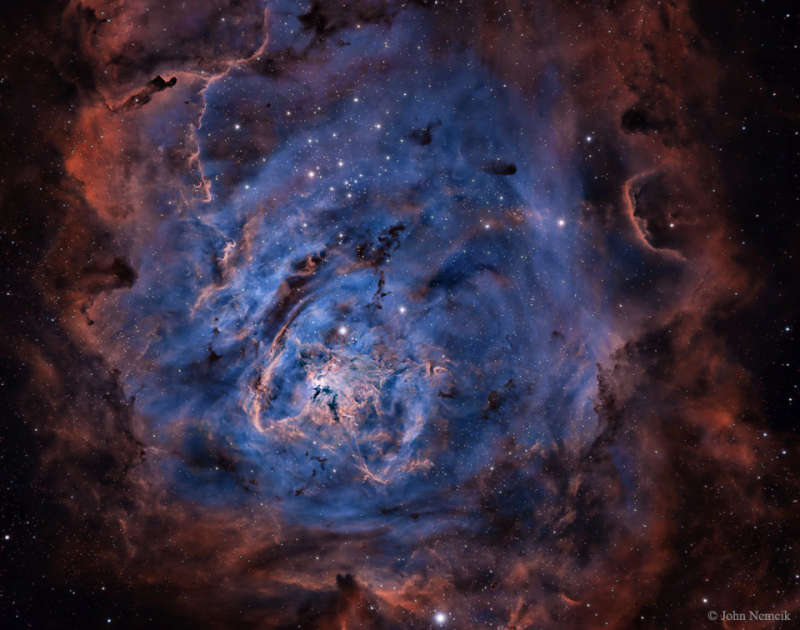Credit & Copyright: John Nemcik
Explanation:
The majestic
Lagoon Nebula
is filled with hot gas and the home for many young stars.
Spanning 100 light years across while lying only about 5000 light years distant, the
Lagoon Nebula is so big and bright that
it can be
seen without a
telescope toward the
constellation of the
Archer
(Sagittarius).
Many bright stars are visible from
NGC 6530, an
open cluster that
formed in the nebula only several million years ago.
The greater nebula, also known as
M8 and NGC 6523,
is named "Lagoon" for the band of dust seen to the
right of the open cluster's center.
The featured image was taken in the light emitted by
Hydrogen (shown in brown),
Sulfur (red), and
Oxygen (blue)
and displayed in
enhanced color.
The featured picture is a newly processed panorama of
M8, capturing twice the diameter of the Full Moon.
Star formation continues in the
Lagoon Nebula as witnessed by the many
globules that exist there.
AAS Conventioneers:
APOD Town Meeting Wednesday
at 2:15 pm
1999 2000 2001 2002 2003 2004 2005 2006 2007 2008 2009 2010 2011 2012 2013 2014 2015 2016 2017 2018 2019 2020 2021 2022 2023 2024 2025 |
Январь Февраль Март Апрель Май Июнь Июль Август Сентябрь Октябрь Ноябрь Декабрь |
NASA Web Site Statements, Warnings, and Disclaimers
NASA Official: Jay Norris. Specific rights apply.
A service of: LHEA at NASA / GSFC
& Michigan Tech. U.
|
Публикации с ключевыми словами:
M 8 - Lagoon Nebula - dust - Туманность Лагуна
Публикации со словами: M 8 - Lagoon Nebula - dust - Туманность Лагуна | |
См. также:
Все публикации на ту же тему >> | |
